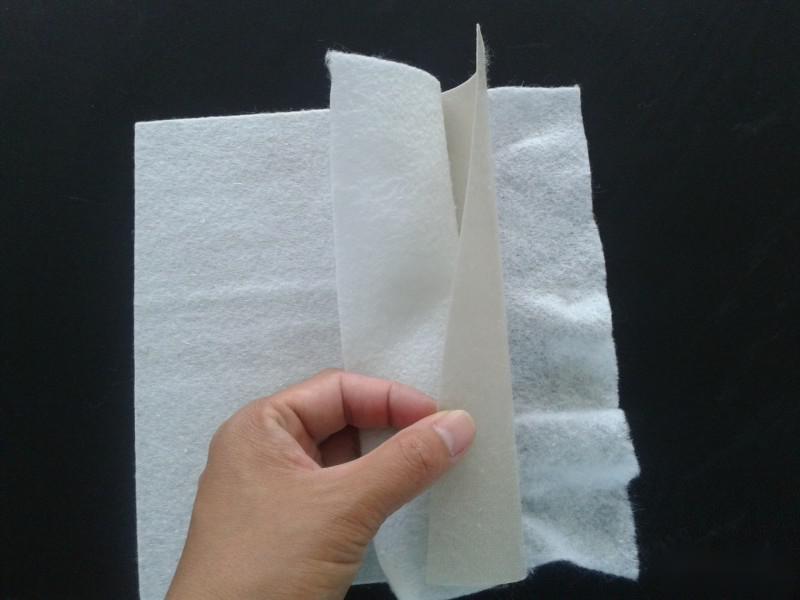600g Composite Geotextile with Two Fabrics and One Membrane Manufacturer
The two fabrics and one membrane (TFOM) is a geotechnical impermeable material that uses a plastic film as a barrier substrate, compounded with non-woven fabric. Its impermeability mainly depends on the performance of the plastic film. Currently, the plastic films used for impermeable applications are mainly polyvinyl chloride (PVC) and polyethylene (PE), which are flexible polymer materials with a low specific gravity, high elongation, excellent adaptability to deformation, corrosion resistance, low-temperature resistance, and good frost resistance. The thickness of the membrane generally ranges from 0.30 to 2.00mm. The main mechanism is to block the leakage channels of the earth dam with the impermeability of the plastic film, which can withstand water pressure and adapt to the deformation of the dam body due to its high tensile strength and elongation. The non-woven fabric is also a polymer fiber material, formed by needle punching or thermal bonding, with high tensile strength and elongation. The non-woven fabrics currently used in the composite include: polyester short fiber needle-punched geotextile, polyester long filament spunbond geotextile, flat yarn plastic woven fabric, etc. After combining with the plastic film, it not only increases the tensile strength and puncture resistance of the plastic film but also improves the friction coefficient of the contact surface due to the rough surface of the non-woven fabric, which is beneficial for the stability of the composite geotextile membrane and the protective layer. At the same time, they have good resistance to bacterial and chemical erosion, being resistant to acid, alkali, and salt erosion.















